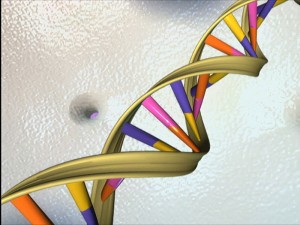 Let’s say you are single. You’re reading over the entries on Match.com and thinking about a partner for life’s Second or Third Act. Are you looking for a profile that says, “Get with me. I’m likely to die quick, but our time together will feel long because I am dull”?
Let’s say you are single. You’re reading over the entries on Match.com and thinking about a partner for life’s Second or Third Act. Are you looking for a profile that says, “Get with me. I’m likely to die quick, but our time together will feel long because I am dull”?
No, you are not.
You are looking for the person who is active and outgoing and a bit of a thrill-seeker, the person who will get you off the couch. And who will be around for a while.
In short, you’re looking for someone who has a genetic variant known as the DRD4 7R allele.
The DRD4 7R allele isn’t new. It’s been studied for years and is known for its role in the transmission of dopamine, a neurotransmitter that helps control the brain’s reward centers. (Think of dopamine as pure liquid pleasure.) For some time, the allele has been associated with sensation-seeking, which means high-risk behavior. (Sky-diving, say, and drug addiction.)
What is new is this: Counter-intuitively, DRD4 7R also appears to be associated with old age. A recent study looked at samples from 310 people 90 years old or older; it found that 66 percent more of them had the gene variant compared to a control group (almost 3,000 test subjects ages 7 to 45).
The authors aren’t claiming that the gene directly bestows longevity. Instead, they suggest that people who have the gene are more likely to lead an active life, and that mix of social engagement and vigorous activity will extend your years.
To recap: if you are an active, extroverted person who still likes the occasional body rush, you should keep your eye out from someone with the DRD4 7R allele. If they’ve reached their senior years, it’s probable that they’ve aged out of the worst, most self-destructive behaviors. They’ve channeled all that thrill-hunger into skiing and mountain biking, maybe, or totally healthy kinkiness, or excellent food and wine. I’m inventing here, but you get the idea.
So, remember the DRD4 7R allele, because one day when Match.com includes genetic information (sooner than you think), you’ll want to look for it.
Image: DNA double helix by the National Human Genome Research Institute, via Wikimedia Commons









